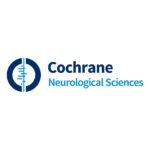
In the clinical evaluation of the patient who has presented a transient loss of consciousness, do not leave out the measurement of blood pressure in the supine and standing position (horizontal and upright position) in order to exclude a condition of persistent orthostatic hypotension.
Orthostatic hypotension is defined as a reduction in systolic pressure higher than 20 mm Hg or in diastolic pressure higher than 10 mm Hg compared to supine (horizontal position) after 3 minutes of standing (standing position) This condition is not always poorly tolerated by the patient – that is, it does not necessarily involve orthostatic intolerance – and therefore must be carefully evaluated in the clinical context.
If recorded orthostatic hypotension is correlated with the episode of transient loss of consciousness, this requires the exclusion of cardiac, neurological and iatrogenic causes (diuretics, alpha-adrenergic blockers, calcium channel blockers, nitrates, tricyclic antidepressants, levo-dopa, antipsychotics); the identification of the condition leads to its treatment and, if possible, its prevention.
Sources
1. NICE National Institute for Health and Clinical Excellence. Transient loss of consciousness (‘Blackouts’) Management in adults and young people. London: Royal College of Physicians (UK); 2010:11, 18, 20, 24.
2. NICE National Institute for Health and Clinical Excellence. Clinical Guidelines, No. 109Transient loss of consciousness (‘blackouts’) in over 16s. London: 2014 Sep. ISBN-13: 978-1-4731-2287-1
3. ESC Guidelines for the diagnosis and management of syncope European Heart Journal, Volume 39, Issue 21, 01 June 2018, Pages 1883–1948
Download
PDFAttention. Please note that these items are provided only for information and are not intended as a substitute for consultation with a clinician. Patients with any specific questions about the items on this list or their individual situation should consult their clinician.


Recent Comments